Water safety and quality publications
Guidelines for drinking-water quality
Guidelines for drinking-water quality: small water supplies
Small drinking-water supplies commonly experience operational, managerial, technical and resourcing challenges that impact their ability to deliver safe...
Guidelines for drinking-water quality: fourth edition incorporating the first and second addenda
The fourth edition incorporating the first and second addenda, of the World Health Organization’s (WHO) Guidelines for drinking-water quality (GDWQ)...
This document describes the “rolling revision” process through which the Guidelines for drinking-water quality (GDWQ) are developed and revised....
WHO supporting publications to the Guidelines for drinking-water quality
Management of cyanobacteria in drinking-water supplies: information for regulators and water suppliers,...
This technical brief provides general information on the management of cyanobacteria in drinking-water supplies to help regulators and water suppliers...
Sanitary inspection packages – a supporting tool for the Guidelines for drinking water quality: small...
A sanitary inspection is a simple, on-site evaluation (traditionally using a checklist) to help identify and support the management of priority risk factors...
Lead is a priority chemical hazard that should be included in national drinking-water quality standards and monitored as part of drinking-water quality...

Domestic water quantity, service level and health
Sufficient quantities of water for household use, including for drinking, food preparation and hygiene, are needed to protect public health and for...
Microplastics in drinking-water
Studies reporting the presence of microplastics in treated tap and bottled water have raised questions and concerns about the impact that microplastics...
Management of radioactivity in drinking-water
Chapter 9 of the WHO Guidelines for Drinking-water Quality (GDWQ) provides guidance related to radiological aspects of drinking-water. Management...
When setting national drinking-water quality regulations and standards, many countries consider the WHO Guidelines for drinking-water quality (GDWQ)....
This document provides practical guidance to support the development or revision of customized national or subnational drinking-water quality regulations...
Disinfection of drinking-water supplies has been one of the most significant public health advancements of the last century with respect to reducing...
Potable reuse : Guidance for producing safe drinking-water
In response to growing pressures on available water resources, potable reuse represents a practical source of drinking-water in specific circumstances....
Chemical mixtures in source water and drinking-water
Drinking-water and its sources invariably contain a number of chemicals, as a result of both natural occurrence and as a consequence of human activity....
Water quality and health: Review of turbidity
This technical brief provides information on the uses and significance of turbidity in source water and drinking-water.Practical guidance is provided on...
The World Health Organization’s (WHO) water quality guidelines recommend a preventive, risk-based approach to water quality management from source...
Management of cyanobacteria in drinking-water supplies
This technical brief provides general information on the management of cyanobacteria in drinking-water supplies to help regulators and water suppliers...
Boil water
Heating water to a rolling boil, as recommended in the WHO Guidelines for Drinking-water Quality (GDWQ), is sufficient to inactivate pathogenic bacteria,...
Water safety in distribution systems
Water quality deterioration in distribution systems, mainly caused by inappropriate planning, design and construction or inadequate operation and maintenance...
Pharmaceuticals in drinking-water
Reports of trace concentrations of pharmaceuticals in the water cycle have raised concerns over potential human health risks from exposure to very low...
Evaluating household water treatment options
This document sets forth global criteria to evaluate whether a household water treatment (HWT) option reduces waterborne pathogens sufficiently to protect...
Guide to ship sanitation, 3rd edition
The primary aim of the revised Guide to ship sanitation is to present the public health significance of ships in terms of disease and to highlight the...
Safe drinking-water from desalination
Safe and clean drinking-water is an essential element of health security and underpins sustainable socio-economic development. Global climate change, a...
Water safety in buildings
Extensive experience shows that poor design and management of water systems in buildings can cause outbreaks of disease. The types of building, water uses,...
Guide to hygiene and sanitation in aviation, 3rd edition
The guide addresses water and cleaning and disinfection of facilities with the ultimate goal of assisting all types of airport and aircraft operators and...
Risk assessment of Cryptosporidium in drinking water
As a waterborne pathogen of significant concern, Cryptosporidium is considered a key reference pathogen in the Guidelines for drinking-water...
This report examines the evidence to date regarding the scalability of HWTS. It seeks to consolidate existing knowledge and experience and distill the...
Calcium and magnesium in drinking-water
The meeting report is on the role and possible health benefits of calcium and magnesium in drinking-water, and includes the following sections:global dietary...
This book provides guidance on the chemical safety of drinking-water. Chemical contaminants of drinking-water are often considered a lower priority than...

Legionella and the prevention of legionellosis
This book provides a comprehensive overview of the sources, ecology and laboratory identification of Legionella. It provides guidance on assessment and...
Fluoride in drinking-water
Fluoride in drinking-water will be an invaluable reference source for all those concerned with the management of drinking-water containing fluoride and...
Review of latest available evidence on potential transmission of avian influenza (H5N1) through water...
A summary of the latest available studies and findings on avian influenza (H5N1) pertaining to water resources, water supplies, sanitation (human excreta,...
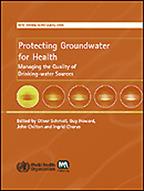
Protecting groundwater for health provides a structured approach to analysing hazards to groundwater quality, assessing the risk they may cause for a specific...

Health aspects of plumbing
The World Health Organization and the World Plumbing Council present this publication on health aspects of plumbing noting that sustainable health, especially...
Nutrients in drinking-water
The World Health Organization assembled a diverse group of nutrition, medical and scientific experts in Rome in November 2003, at the WHO European Centre...
Microorganisms occur in piped distributions from source water, through contamination during distributions and because of growth. Different organisms may...
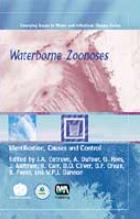
Waterborne zoonoses: Identification, causes and control
Zoonoses are diseases caused by microorganisms of animal origin that also infect humans. Zoonoses are of increasing concern for human health; next to...
Pathogenic mycobacteria in water: A guide to public health consequences, monitoring and management
Mycobacteria are a large group of microorganisms that inhabit a diverse range of natural environments: some species are capable of infecting humans and...
Water treatment and pathogen control: Process efficiency in achieving safe drinking-water
Increasingly, microbial issues are commanding the attention of water treatment operators, regulators, and the media. There are many treatment options to...
Emerging issues in water and infectious disease
Infectious, water-related diseases are a major cause of morbidity and mortality worldwide. Newly-recognized pathogens and new strains of established pathogens...
The process of developing hazard characterization guidelines was initiated at a workshop hosted by the WHO Collaborating Centre for Food Safety, National...
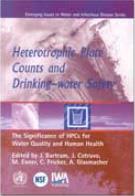
Heterotrophic plate counts and drinking-water safety: The significance of HPCs for water quality and...
This book provides a critical assessment of the role of HPC measurement in drinking water quality management. The HPC test (or Standard Plate Count), applied...
Linking technology choice with operation and maintenance in the context of community water supply and...
The present document aims to help decision-makers identify the most appropriate technology for expanding water supply and sanitation services, taking into...

This book provides a state-of-the-art review on approaches and methods used in assessing the microbial safety of drinking-water. It supports the rapidly...
Managing water in the home
Around 2.2 million die of basic hygiene related diseases, like diarrhoea, every year. The great majority are children in developing countries. Interventions...
Lack of access to laboratories or field analysis kits is an obstacle to the provision of microbiologically safe drinking water to many communities and...

Water quality : guidelines, standards and health
The quality of water, whether it is used for drinking, irrigation or recreational purposes, is significant for health in both developing and developed...
Other documents of interest
See also
Water safety planning
Sanitary inspection packages – a supporting tool for the Guidelines for drinking water quality: small...
A sanitary inspection is a simple, on-site evaluation (traditionally using a checklist) to help identify and support the management of priority risk factors...
Water safety plan manual: step-by-step risk management for drinking-water suppliers, second edition
This Water safety plan manual provides practical guidance to support development and implementation of water safety planning in accordance with the principles...
The lack of access to safe drinking-water is felt disproportionately by those who are disadvantaged socially, economically, demographically or geographically,...
Strengthening operations and maintenance through water safety planning
Strong operations and maintenance (O&M) programmes underpin the effectiveness and sustainability of drinking-water supply systems. Increased attention...
Climate-resilient water safety plans: managing health risks associated with climate variability and change
Long-term planning for an adequate and safe supply of drinking-water should be set in the context of growing external uncertainties arising from changes...
Potable reuse : Guidance for producing safe drinking-water
In response to growing pressures on available water resources, potable reuse represents a practical source of drinking-water in specific circumstances....
Global status report on water safety plans
Water safety planning is a comprehensive risk assessment and risk management approach that is widely recognized as the most reliable and effective way...
Principles and practices of drinking-water chlorination: a guide to strengthening chlorination practices...
The WHO/AusAID (DFAT) Partnership for Water Quality and Health has been promoting Water Safety Plans (WSPs) in SEARO countries for...
Operational monitoring plan development: A guide to strengthening operational monitoring practices in...
The WHO/AusAID (DFAT) Partnership for Water Quality and Health has been promoting water safety plans (WSPs) in countries of the South-East...
Protecting surface water for health: Identifying, assessing and managing drinking-water quality risks...
Protecting surface water for health provides a structured approach to understanding surface waters and their catchments to support the identification,...
A practical guide to auditing water safety plans
Water safety plans (WPS) have been implemented in every region of the world, and many implementing countries have included WSPs in drinking-water policies...
Water safety plan: a field guide to improving drinking-water safety in small communities
The WHO Guidelines for drinking-water quality recommend the water safety plan (WSP) approach as the most effective way of ensuring continuous...
Water safety in distribution systems
Water quality deterioration in distribution systems, mainly caused by inappropriate planning, design and construction or inadequate operation and maintenance...

Water safety plan quality assurance tool
The WHO Guidelines for Drinking-water Quality advocates for the implementation of Water Safety Plans (WSPs), a risk based preventative approach to managing...
Water safety planning for small community water supplies
The WHO Guidelines for Drinking-water Quality recommends the application of a comprehensive risk assessment and risk management approach called Water Safety...
Guide to ship sanitation, 3rd edition
The primary aim of the revised Guide to ship sanitation is to present the public health significance of ships in terms of disease and to highlight the...
Water safety in buildings
Extensive experience shows that poor design and management of water systems in buildings can cause outbreaks of disease. The types of building, water uses,...
Water safety plan manual (WSP manual): Step-by-step risk management for drinking-water suppliers (1st...
In 2004, the WHO Guidelines for Drinking Water Quality recommended that water suppliers develop and implement "Water Safety Plans" (WSPs) in order to systematically...

Protecting groundwater for health provides a structured approach to analysing hazards to groundwater quality, assessing the risk they may cause for a specific...
During the revision of the WHO Guidelines for Drinking-water Quality leading to the 3rd edition, the value of the Water Safety Plan (WSP) approach has...
Other documents of interest
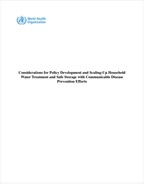
Considerations for policy development and scaling-up household water treatment and safe storage with...
An estimated 780 million people drink water from unimproved sources, and millions more drink contaminated water from improved sources. Unsafe drinking-water,...

Water Safety Plans training package
WSPs are a risk-based preventative approach to most effectively protect drinking-water safety and are recommended in the WHO Guidelines for Drinking-water...
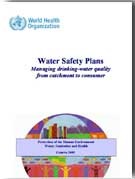
This two-page leaflet summarizes the water safety plan approach in the management of drinking-water quality.
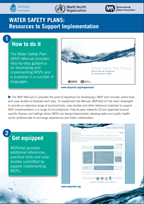
Information about publications and documents produced in support of the implementation of water safety plans.

Think big, start small, scale up
As part of ongoing efforts to improve drinking-water safety and health, many countries have requested guidance on how to introduce and scale up the implementation...
Drinking-water quality regulation
Safe and reliable drinking-water supply depends on effective risk management, appropriate regulation and support, and well-informed technology selection....
Guidelines for drinking-water quality: small water supplies
Small drinking-water supplies commonly experience operational, managerial, technical and resourcing challenges that impact their ability to deliver safe...
Guidelines for drinking-water quality: fourth edition incorporating the first and second addenda
The fourth edition incorporating the first and second addenda, of the World Health Organization’s (WHO) Guidelines for drinking-water quality (GDWQ)...
Management of radioactivity in drinking-water
Chapter 9 of the WHO Guidelines for Drinking-water Quality (GDWQ) provides guidance related to radiological aspects of drinking-water. Management...
When setting national drinking-water quality regulations and standards, many countries consider the WHO Guidelines for drinking-water quality (GDWQ)....
This document provides practical guidance to support the development or revision of customized national or subnational drinking-water quality regulations...
Small water supply management
Safe and reliable drinking-water supply depends on effective risk management, appropriate regulation and support, and well-informed technology selection....
Guidelines for drinking-water quality: small water supplies
Small drinking-water supplies commonly experience operational, managerial, technical and resourcing challenges that impact their ability to deliver safe...
Sanitary inspection packages – a supporting tool for the Guidelines for drinking water quality: small...
A sanitary inspection is a simple, on-site evaluation (traditionally using a checklist) to help identify and support the management of priority risk factors...
Guidelines for drinking-water quality: fourth edition incorporating the first and second addenda
The fourth edition incorporating the first and second addenda, of the World Health Organization’s (WHO) Guidelines for drinking-water quality (GDWQ)...
Protecting surface water for health: Identifying, assessing and managing drinking-water quality risks...
Protecting surface water for health provides a structured approach to understanding surface waters and their catchments to support the identification,...
A practical guide to auditing water safety plans
Water safety plans (WPS) have been implemented in every region of the world, and many implementing countries have included WSPs in drinking-water policies...
Water safety planning for small community water supplies
The WHO Guidelines for Drinking-water Quality recommends the application of a comprehensive risk assessment and risk management approach called Water Safety...
Linking technology choice with operation and maintenance in the context of community water supply and...
The present document aims to help decision-makers identify the most appropriate technology for expanding water supply and sanitation services, taking into...

Healthy villages: A guide for communities and community health
Health is determined by many factors, including income, environmental conditions - such as access to adequate sanitation and safe water supplies - individual...
This document and the training activities described in it are intended for managers and planners who are concerned with the challenging problem of how...
PHAST step-by-step guide: A participatory approach for the control of diarrhoeal disease
The PHAST approach helps people to feel more confident about themselves and their ability to take action and make improvements in their communities. Feelings...
Other document of interest

Household water treatment and safe storage
Guidelines for drinking-water quality: small water supplies
Small drinking-water supplies commonly experience operational, managerial, technical and resourcing challenges that impact their ability to deliver safe...
Sanitary inspection packages – a supporting tool for the Guidelines for drinking water quality: small...
A sanitary inspection is a simple, on-site evaluation (traditionally using a checklist) to help identify and support the management of priority risk factors...
Since the establishment of the International Scheme to Evaluate Household Water Treatment Technologies (the Scheme) in 2014, WHO has been independently...
The fourth edition of the World Health Organization’s (WHO) Guidelines for drinking-water quality (GDWQ) builds on over 50 years of guidance by WHO...
In 2014, WHO established the International Scheme to Evaluate Household Water Treatment Technologies. The Scheme aims to consistently and independently...
Boil water
Heating water to a rolling boil, as recommended in the WHO Guidelines for Drinking-water Quality (GDWQ), is sufficient to inactivate pathogenic bacteria,...
In order to develop effective mechanisms to encourage and sustain correct use of household water treatment and safe storage (HWTS), there is a need to...
Status of national household water treatment and safe storage policies in selected countries
Household water treatment and safe storage (HWTS) is a proven intervention to improve drinking-water quality and reduce diarrhoeal disease. Achieving meaningful...
Evaluating household water treatment options
This document sets forth global criteria to evaluate whether a household water treatment (HWT) option reduces waterborne pathogens sufficiently to protect...
Combined household water treatment and indoor air pollution projects in urban Mambanda, Cameroon and...
In 2007, the World Health Organization (WHO) issued a request for proposals (RFP) on the integration of Indoor Air Quality (IAQ) and Household Water Treatment...
This report examines the evidence to date regarding the scalability of HWTS. It seeks to consolidate existing knowledge and experience and distill the...
Combating waterborne disease at the household level
A growing body of research has confirmed the key role that point-of-use water quality interventions can play in reducing diarrhoeal disease in a cost-effective...
Recreational waters
Old recreational water guidelines
Guidelines for safe recreational water environments. Volume 1: Coastal and fresh waters
This volume of the Guidelines for Safe Recreational Water Environments describes the present state of knowledge regarding the impact of recreational use...
Guidelines for safe recreational water environments. Volume 2: Swimming pools and similar environments
This volume of the Guidelines for Safe Recreational Water Environments describes the present state of knowledge regarding the impact of the recreational...
Guidelines for safe recreational water environments. Volume 1 - Addendum 1: List of agreed updates
This addendum provides updated information based on new scientific evidence to explain matters relating to faecal pollution in the 2003 volume of the Guidelines...
